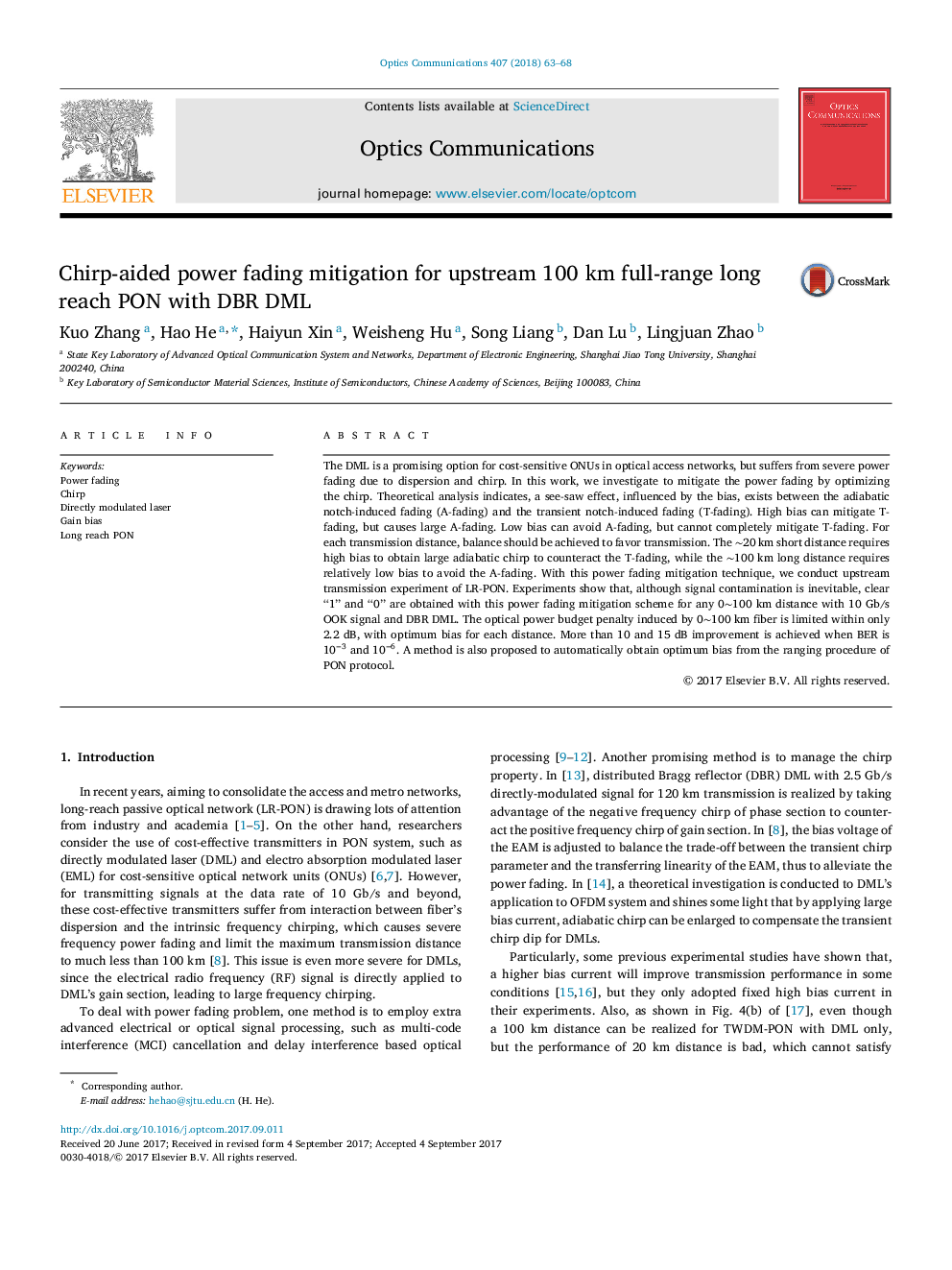| Article ID | Journal | Published Year | Pages | File Type |
|---|---|---|---|---|
| 5448939 | Optics Communications | 2018 | 6 Pages |
Abstract
The DML is a promising option for cost-sensitive ONUs in optical access networks, but suffers from severe power fading due to dispersion and chirp. In this work, we investigate to mitigate the power fading by optimizing the chirp. Theoretical analysis indicates, a see-saw effect, influenced by the bias, exists between the adiabatic notch-induced fading (A-fading) and the transient notch-induced fading (T-fading). High bias can mitigate T-fading, but causes large A-fading. Low bias can avoid A-fading, but cannot completely mitigate T-fading. For each transmission distance, balance should be achieved to favor transmission. The â¼20Â km short distance requires high bias to obtain large adiabatic chirp to counteract the T-fading, while the â¼100Â km long distance requires relatively low bias to avoid the A-fading. With this power fading mitigation technique, we conduct upstream transmission experiment of LR-PON. Experiments show that, although signal contamination is inevitable, clear “1” and “0” are obtained with this power fading mitigation scheme for any 0â¼100Â km distance with 10Â Gb/s OOK signal and DBR DML. The optical power budget penalty induced by 0â¼100Â km fiber is limited within only 2.2Â dB, with optimum bias for each distance. More than 10 and 15Â dB improvement is achieved when BER is 10â3 and 10â6. A method is also proposed to automatically obtain optimum bias from the ranging procedure of PON protocol.
Keywords
Related Topics
Physical Sciences and Engineering
Materials Science
Electronic, Optical and Magnetic Materials
Authors
Kuo Zhang, Hao He, Haiyun Xin, Weisheng Hu, Song Liang, Dan Lu, Lingjuan Zhao,
